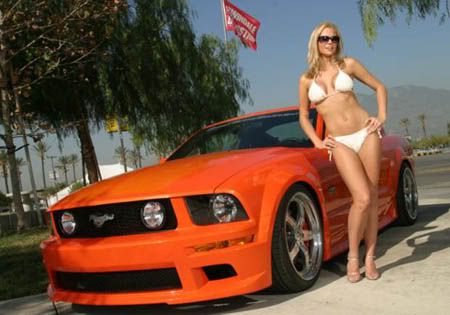 Bring Back the Old Beetle
Bring Back the Old Beetle!, What's needed in these economically tough times is a return to a true "people's car" - something that's not only priced in line with our downsized buying power but also something we can keep running with a $50 set of basic hand tools, duct tape and RTV.
That car is the Old Beetle. It may have been the perfect car. In continuous production for nearly 50 years, largely unchanged - on the order of 40 million of them made.
The only reason they're not still being made is because (drumroll, please) our friends in the government outlawed them - albeit in a roundabout way.
For our safety, government passed laws that require all new cars meet certain crashworthiness standards. The Old Beetle - a car conceived in the mid-1930s - could not be made to meet standards invented by American bureaucrats 40 years later. This is one reason why the Old Beetle could no longer be sold here after 1979 - the last year it was offered new in the United States. (The car continued to be built in Mexico until 2002.)
Reason number two for the Old Beetle's demise had to do with emissions. Our government once again decreed that all new cars could only produce so much pollution - and not a puff more. The Old Beetle's air-cooled horizontally-opposed "boxer" engine was simple and rugged and cheap - but it couldn't make the emissions cut.
This is why the Old Beetle was finally dropped from the rolls in Mexico, too. There was no way to make the by-then 70 year-old design comply with modern emissions requirements without completely redesigning the engine.
These two things - acceptable crasworthiness and low emissions - are of course desirable. But they're not free - or even cheap. An Old Beetle's Solex 1-barrel downdraft carburetor was the basic component of its entire fuel system (the rest being a gas tank, some fuel lines and so on). The carburetor cost less than $100 for the whole thing, brand new. Your ten-year-old kid could install the thing, too. Literally. (It was secured by two bolts that could be turned out with a set of pliers.)
How much do you suppose it would cost you to replace the electronic fuel injection system on a New Beetle - or even to do a major repair? Think you could do it yourself?
An Old Beetle has no ABS - or even disc brakes. The "electronics" consist of a map light and the battery that's under the backseat (assuming the floorpans are solid). There are four forward gears, no hydraulic-assisted clutch, skinny tires on stamped steel 15 inch wheels and a bodyshell that weighs less than 2,000 pounds - which let you get by with an engine that makes not much more power than a good-sized garden tractor.
The thing runs on the cheapest, lowest grade fuel (think Mexico) and can be swapped out for a new (or junkyard) replacement, when the time comes, with a floor jack and for a couple hundred bucks.
No radiator, no coolant, no hoses, either. Heck, there wasn't even an oil filter. Just a screen you cleaned! That and about three quarts of new oil and you were done. Less than $10 and five minutes or so to change the oil.
It was, briefly put, the distilled essence of "car" - perhaps the best four-wheeled appliance ever created. It got you there. Maybe not quickly; maybe not especially comfortably. But it got you there - most of the time, at least.
And ultimately, isn't that what it's all about? Getting to work and back efficiently and economically? The rest - air bags, GPS, leather, 400 hp engines - it's all very nice but it's also very expensive. Such features jack up the price and commit us to debt-slavery in perpetuity. Very few people can afford to buy a new car in cash anymore. Six year car loans are common. In the days of the Old Beetle, average people could and did buy them cash on the barrel. Or maybe they financed for two or three years. But it was manageable. You weren't economically crippled by a $400/month payment for the next half-decade.
We've forgotten something very important: Unlike a house or a decent stock portfolio, a car is not an "investment." It is a depreciating asset and very often, a money pit. And the expenses associated with cars is arguably one of the reasons why so many of us are so broke right now.
We bought into the spin; we wanted to be that guy (or girl) in the commercial. We liked to jangle our keys, drop brand names and sit self-satisfied in traffic, luxuriating in our perforated (and heated!) leather seats.

But just think how much richer we'd all be if, instead of having frittered away $30,000 or $40,000 on the new Whatsit (which five or six years down the road is going to be worth $15k, if that) we'd purchased something like an Old Beetle - a car that cost maybe $5,000 brand-new, inflation adjusted - and put the rest in the bank. Or paid down the mortgage. Or some other productive thing. We'd be a lot less pinched now, for one thing. We can't cry of over spilt milk, of course. But we can learn from the past. And we could have cars like the Old Beetle again, if we wanted. It's just a question of telling six-figure bureaucrats in DC to shove off - and of course, giving our own selves a reality check. Wouldn't it be great?























.jpg)
.jpg)
.jpg)
.jpg)



































